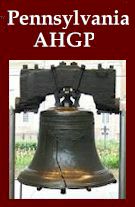Moyamensing Prison
This is a County Prison, situated on the Passaunk road, about
two miles from the centre of the City, embracing Debtors and
Criminal, apartments. The entire front of the main building is
erected of Kennebunk granite, a rich material, presenting the
aspect of the grand, solemn, and solid, as if the structures
were reared for ages. It is a pure specimen of Gothic
Architecture, from a design, by our distinguished architect, T.
U. Walter, Esq. The debtor's apartment, is a pure specimen of
the Egyptian style, constructed from the red freestone, and
containing twenty-four sleeping rooms, arranged on either side
of a hall, running the whole length of the structure. The two
extensive corridors, are constructed of a common species of
granite, the two principal ones being each 376 feet long, in the
clear, by 20 wide, and there are 204 cells in each corridor.
Another corridor, of 102 cells is about being completed; they
are three stories high, with an area whole length between. The
cells are upon each side, the access to which is, by galleries
running the whole front on the second and third stories. The
cells are arched above, and perfectly fireproof; they are eleven
feet in length, by nine wide and warmed by a flue from the
heating chambers, which run the entire length of each wing,
beneath the first story. There is a pipe introduced into every
cell, which brings water from the great basins at Fair Mount:
There are also water tanks, conveying water to every cell, for
the purpose of cleansing daily, and a cold air flue, for free
ventilation.
Like the system adopted in the State Prison, (Eastern
Penitentiary) the practice of solitary confinement, with labor,
is found to be a great improvement. The convicts are taught
trades, and set at work, each one, in his own cell. Weaving,
spinning and shoemaking are most performed. Hand-looms are
erected. In the rooms, at which, almost all the women convicts,
and many of the males are employed. The raw material (cotton) is
purchased, and every process necessary, to turn it into cotton
fabrics is performed within the walls of the prison, and the
fabrics stand higher than any other in the market. Some of the
superannuated prisoners are employed in picking wool, in the
third story, which is manufacture into woolen goods.
The prisoners are received upon a common level; but they are
dealt with, according to their good or bad conduct, afterwards.
The extreme of punishment is, confinement in a dark cell, on
water and half a lb. of bread each day. Taking work away from
the prisoners is often a sufficient punishment; they beg for it
again, as they have nothing to occupy their minds in their
cells. Solitary confinement without labor, produces insanity;
but solitary confinement with labor, produces moral reformation.
An account is opened with every prisoner; they are stinted with
a task, and paid for what they perform over.
One person was lately discharged, who had been imprisoned
twenty-three months, and was paid $106 50, for over work.
Some idea of the amount of work done in the prison, may be
formed, from the fact, that the average of cotton fabrics
produced, is about Five Thousand yards per week.
Punishments
At an early period of the History of Pennsylvania, the
philanthropic spirit of its Founder, William Penn, had turned,
public attention to a melioration of punishments, and the
sanguinary code, of the mother country, was modified, on the
side of mercy. In 1768, an attempt was made to introduce hard
labor, as a punishment of criminals, in many offences, before
that time, of a capital grade.
In 1787, Dr. Rush read a paper, before a Benevolent Society,
assembled at the house of Dr. Franklin, entitled, "An enquiry
into the influence of public executions, on criminals and
society." The philanthropic ideas, which he advanced, were
considered wild and visionary notions. In 1788, Dr. Rush
following the suggestion of the celebrated Marquis Beccaria, in
a treatise on "Grimes and Punishments," again presented the
subject to public consideration, in a printed form, and even
denied the right of government, to destroy life, as a
punishment: From these early endeavors, have arisen the great
improvements made by in our Penitentiary systems, and the
certainty of regulated punishments seems, so far to promise,
much more in the correction of crime, than the sanguinary code,
of former times.
History of Philadelphia

|
![]()

![]()
